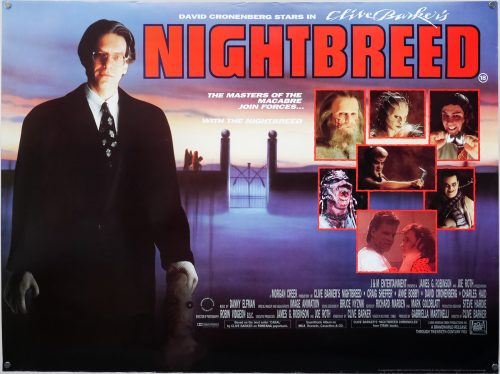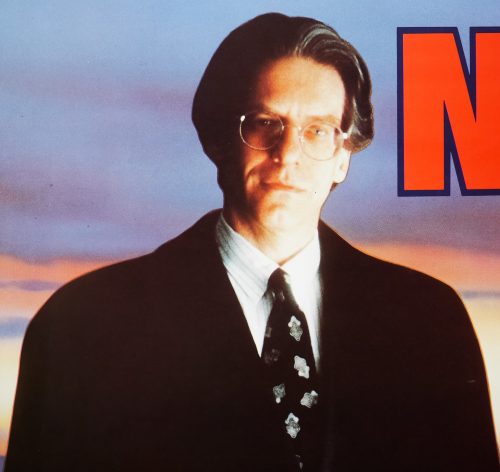- AKA
- Il Mito [The Myth] (Italy)
- Year of Film
- 1989
- Director
- Stephen Hopkins
- Starring
- Robert Englund, Lisa Wilcox, Kelly Jo Minter, Erika Anderson, Nicholas Mele, Joe Seely, Valorie Armstrong, Danny Hassel, Burr DeBenning, Clarence Felder
- Origin of Film
- USA
- Genre(s) of Film
- Robert Englund, Lisa Wilcox, Kelly Jo Minter, Erika Anderson, Nicholas Mele, Joe Seely, Valorie Armstrong, Danny Hassel, Burr DeBenning, Clarence Felder,
- Type of Poster
- B2
- Style of Poster
- Art style
- Origin of Poster
- Japan
- Year of Poster
- 1989
- Designer
- Unknown
- Artist
- Unknown
- Size (inches)
- 20 6/16" x 28 12/16"
- SS or DS
- SS
- Tagline
- --
Unique artwork features on this Japanese B2 for the release of the fifth entry in the much-loved horror franchise, A Nightmare on Elm Street 5. The film’s subtitle ‘the Dream Child’ hints at the plot for the film, which sees Freddy attempting to return from hell by using the mind of an unborn baby. The child belongs to Alice (Lisa Wilcox) who was the main character in the previous film and the father is her boyfriend Dan (Danny Hassel) who also returns from Part 4. The Dream Child was only the second film directed by Stephen Hopkins, the Jamaican-born English-Australian director best known for helming Predator 2 and the 1998 reboot of Lost in Space.
Set a year after the previous film, the story sees Alice and her friends graduating from high school with Freddy Krueger seemingly vanquished for good. Alice begins to have strange dreams in which she finds herself in the asylum where Freddy’s mother, a nun named Amanda, was attacked and raped by the inmates. Later she has another dream in which she witnesses Amanda giving birth to a strange, deformed baby. The creature scuttles off and ends up in the church where Alice vanquished Freddy in Part 4 whereupon it grows into an adult Krueger. He immediately begins to taunt Alice, claiming he has found a way to return for good. When she wakes from the dream she immediately summons Dan to her but he falls asleep at the wheel of his motorbike and Freddy attacks and, during a gruesome sequence, melds him together with the bike before crashing him into a truck. Soon afterwards she learns that she is pregnant with Dan’s child and immediately begins to fear for its safety.
Alice and her friends must once again battle together with the spirit of Amanda Krueger to stop Freddy before he is able to return and take over the mind of Alice’s unborn son (Jacob). To be honest, the film gets very confusing and it’s hard to follow what’s happening most of the time, never mind how an unborn baby suddenly becomes a ten-year-old child in some of the sequences. The usual dream deaths are pretty dark and there are some gruesome moments for horror hounds, but the story barely hangs together, with choppy editing and hammy acting not helping at all. Although not a box-office disaster, the film failed to take anywhere near the box-office of Part 3 and 4 and audiences were certainly cooling towards the franchise by this point.
This artwork is a modified take on the photographic image of Freddy with the pram seen on the German A1 poster. I’m not sure who was responsible for the painting so if anyone has any ideas please get in touch. The small illustrated figure in the bottom right is actually from the alternate style Japanese B2 poster which I also have in the collection here.





























































































































